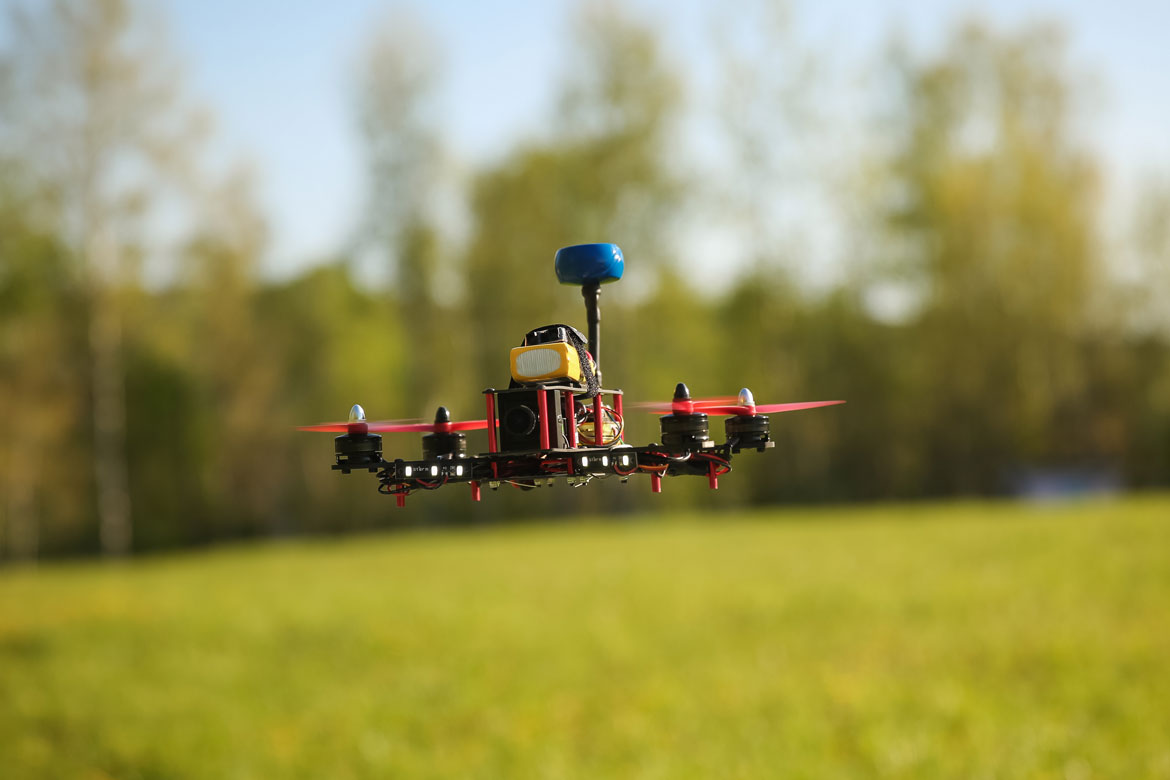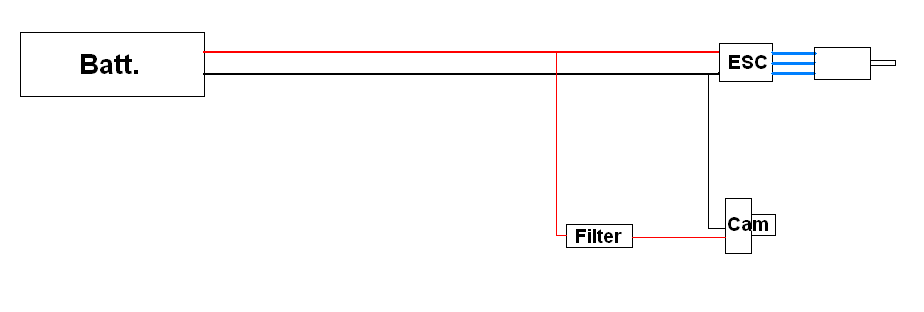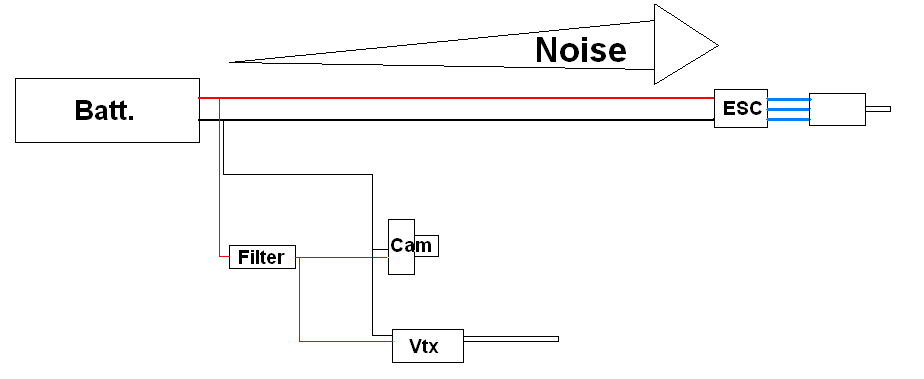
Credit Hugo Chamberland, TrueRC Canda inc.
This is a follow-up of my article on video signals. I continue on what can affect your FPV experience, mostly what can affect the video quality. Many people neglect the wirings of their FPV ships, as long as everything is connected and no smoke is released, they believe its fine. This is not true; there are some rules to follow when you transit sensible signals such as analog video along with high power motors or other noisy electronics.
As I said earlier, the analog video signal is varying between 0 and 1V found in between signal wire (+) and grd. Wire. What if the grd. wire is not at 0V, but at 0.1V? Yes, it affects the video signal. As current flow in the grd. wire, a voltage is found along its length. The farther from the source (batt.) the higher the voltage, the higher the current the higher the voltage and the smaller the wire the higher the voltage. The worst situation being long and small wires from batt. to ESC and connecting the camera’s grd. near the ESC, as seen in img.#1.
Img. #1 “Bad video wiring”
Credit Hugo Chamberland, TrueRC Canada inc.
A good wiring is shown in img.#2. As depicted, voltage ripples (noise) grow as you get away from the power source (batt.).
Img. #2 “Good video wiring”
Credit Hugo Chamberland, TrueRC Canada inc.
Now, if we add the Vtx same thing apply. If we connect the Vtx’s ground at the camera, we will have the ripple from the cam on the Vtx ground line. Although, the ripple from the cam is very small to non-existent, it is good wiring practice to wire the Vtx at the source like in img. #4.
Img. #3 “Bad Vtx wiring”
Credit Hugo Chamberland, TrueRC Canada inc.
Img.#4 “Good Vtx wiring”
Credit Hugo Chamberland, TrueRC Canada inc.
The wiring configuration of a FPV airplane should look like a star, where all sensible devices have its own lines going to a common point, near the source.
Hugo Chamberland, TrueRC Canada inc.





